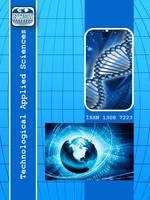TRASIN ÇİMENTO YÜZEY ÖZELLİĞİNE, HİDRATASYONA VE BASINÇ DAYANIMINA ETKİSİ
Bu çalışmada, portland çimentosu (PÇ) ve tras katkılı çimentonun (TKÇ) yüzey etkileşim mekanizmaları araştırılmıştır. PÇ, tras ve TKÇ'nun fiziksel, kimyasal, mineralojik ve mekanik özelliklerinin yanı sıra tras-PÇ tanelerinin elektrokinetik potansiyelleri (zeta potansiyel) belirlenmiştir. PÇ ve tras ile hazırlanan çimento hamurları 2, 7 ve 28 gün küre tabi tutulmuştur. Bu hamurların, hidratasyon sırasında minerolojik yapısını ve faz gelişimini belirlemek için DTA-TG, XRD ve FT-IR analizleri yapılmıştır. Ayrıca 28 günlük mikro yapıları SEM ile belirlenmiş ve harç numuneleri dayanım testleri yapılarak incelenmiştir. Tras, PÇ'ye göre farklı elektrokinetik davranışlar ve yüzey özellikleri göstermiştir. Bu farklılıklar harç örneklerinin dayanımlarını etkilemiştir.
Anahtar Kelimeler:
Çimento, Hidratasyon, Mineroloji, , Tras, Yüzey Özellikleri,
THE EFFECT OF TRASS ON THE CEMENT SURFACE PROPERTIES, HYDRATION AND COMPRESSIVE STRENGTH
In this study, surface interaction mechanisms of the portland cement (OPC) and trass blended cements (TC) were investigated. The physical, chemical, mineralogical and mechanical properties of OPC, trass and TC, as well as the electrokinetic potantials (zeta potantial) of trass-PÇ particles were examined. After cement pastes were prepared with OPC and trass, they were water-cured for 2, 7 and 28 days. The pastes were made using XRD, DTA-TG and FT-IR in order to determine their mineralogical composition and the determination of the phases developed during the hydration. Furthermore by SEM 28-day microstructures of pastes were determined and mortars were examined following strength tests. Trass has shown different electrokinetic behaviours and surface features compared to OPC. These variations effected on compressive strenght of mortar samples.
Keywords:
Cement, Hydration, Mineralogy, Trass, Surface Properties, ,
- Başlangıç: 2009
- Yayıncı: E-Journal of New World Sciences Academy
